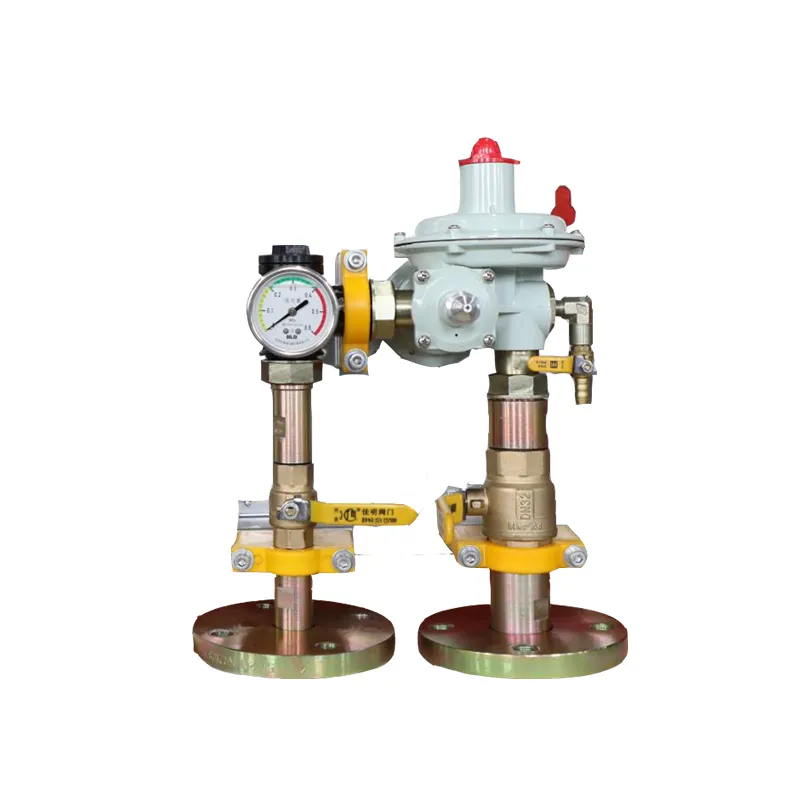
Nov . 08, 2024 22:11
Back to list
gas safety relief valve
Understanding Gas Safety Relief Valves
In various industrial applications, managing the pressure of gases is critical to ensuring a safe working environment. One of the primary components used to achieve this is the gas safety relief valve. This essential device plays a crucial role in protecting systems from excessive pressure that could lead to catastrophic failures. In this article, we will explore the functions, types, and importance of gas safety relief valves, shedding light on their significance in maintaining safety in gas systems.
What is a Gas Safety Relief Valve?
A gas safety relief valve is a mechanical device designed to automatically release gas from a pressurized system whenever the pressure exceeds a predetermined limit. By doing so, it prevents potential hazards such as explosions, equipment failure, and environmental contamination. The valve is typically installed on tanks, pipelines, and vessels where gas pressure needs to be monitored and controlled.
How Does It Work?
The operation of a gas safety relief valve is based on the principle of pressure differentials. These valves are calibrated to open at specific pressure levels. When the internal pressure of the system exceeds this threshold, the valve opens and allows excess gas to escape, thereby reducing the pressure to a safe level. Once the pressure drops back to an acceptable range, the valve closes automatically, sealing the gas system once again.
Types of Gas Safety Relief Valves
There are several types of gas safety relief valves, each with unique mechanisms suited for different applications
gas safety relief valve

1. Spring-loaded relief valves These are the most common type of gas safety relief valves. They use a spring mechanism to hold the valve shut until the internal pressure exceeds the spring's tension. When that happens, the valve opens, releasing the excess pressure.
2. Pilot-operated relief valves These valves utilize a smaller pilot valve to control the opening of the main valve. They are more sensitive and can maintain precise pressure control, making them suitable for systems that require stringent pressure regulation.
3. Vacuum relief valves These valves are designed to protect against negative pressure, or vacuum conditions, in a system. They open when the internal pressure drops below a specific level, allowing air to enter the system and preventing collapse or damage.
Importance of Gas Safety Relief Valves
The significance of gas safety relief valves cannot be overstated. In industrial settings, failure to manage gas pressure can lead to severe consequences, including explosions, fires, and loss of life. By incorporating safety relief valves into gas systems, operators ensure a reliable safety mechanism that can respond to pressure fluctuations automatically.
Moreover, regulatory standards dictate the use of safety relief valves in many industries, including oil and gas, chemical manufacturing, and power generation. Compliance with these regulations not only helps protect workers but also mitigates the risks of environmental damage and financial loss.
Conclusion
In conclusion, gas safety relief valves are indispensable in maintaining safe operating conditions for gas systems. By effectively managing pressures, these valves safeguard against hazards that could jeopardize human life and the environment. As industries continue to evolve and grow, the importance of these valves will remain paramount, emphasizing the need for regular maintenance and adherence to safety standards. Understanding and utilizing gas safety relief valves is essential for any facility that works with pressurized gases, highlighting the interplay between safety, technology, and responsibility in the industrial landscape.
Next:
Latest news
-
Safety Valve Spring-Loaded Design Overpressure ProtectionNewsJul.25,2025
-
Precision Voltage Regulator AC5 Accuracy Grade PerformanceNewsJul.25,2025
-
Natural Gas Pressure Regulating Skid Industrial Pipeline ApplicationsNewsJul.25,2025
-
Natural Gas Filter Stainless Steel Mesh Element DesignNewsJul.25,2025
-
Gas Pressure Regulator Valve Direct-Acting Spring-Loaded DesignNewsJul.25,2025
-
Decompression Equipment Multi-Stage Heat Exchange System DesignNewsJul.25,2025

